Car Review: Hyundai i30 Tourer
Shockingly handsome small package
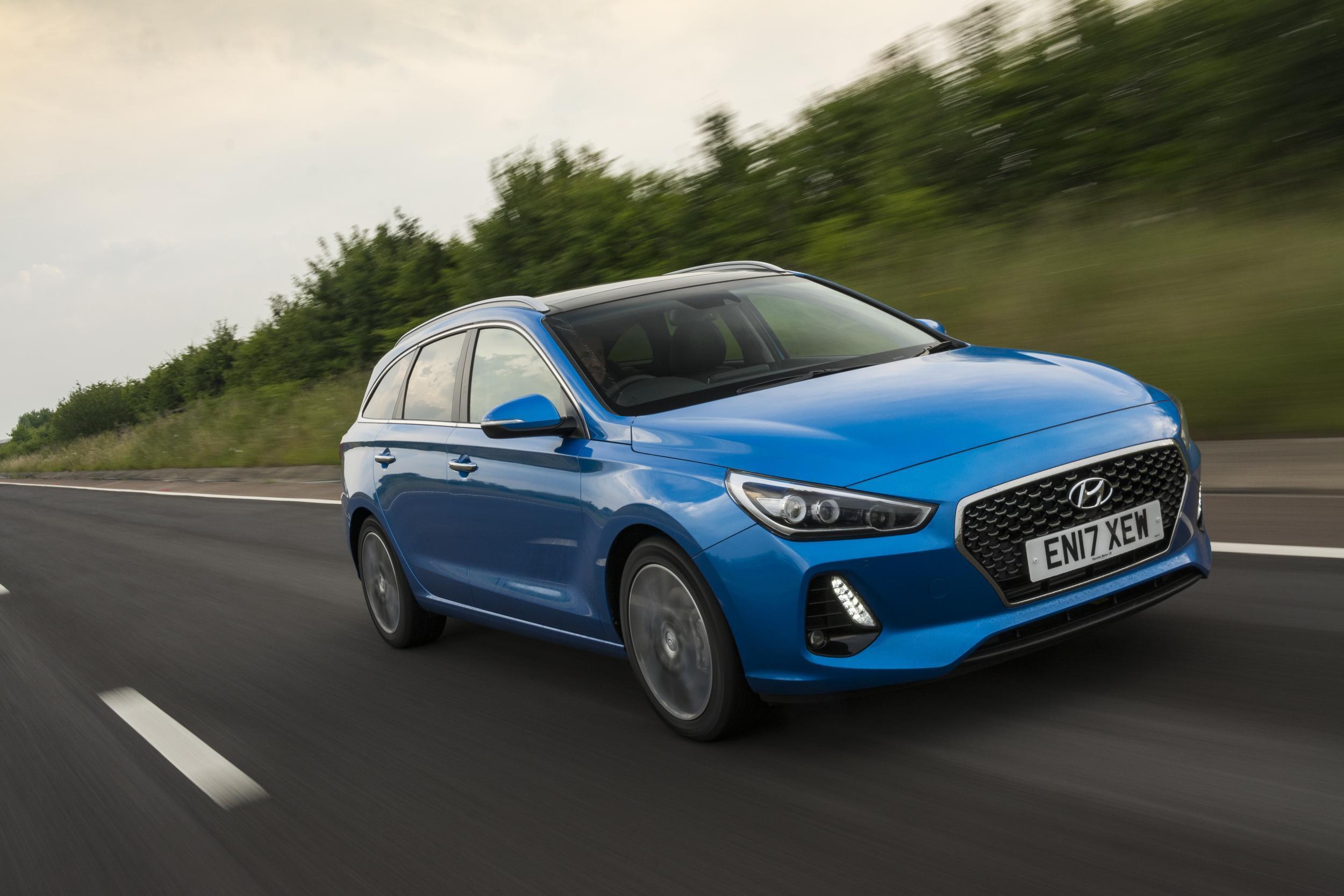
“Hyundai Makes Good-looking Small Estate Car Shock”.
Well, it is true. The new i30 mid-sized “Tourer”, as they call it, is quite a handsome little thing (and little can be handsome, you know. We’re not all lummocks). The front has something of an on-trend, and sharply styled, Peugeot or Ford about it; the side profile is something perhaps inspired by a contemporary Mercedes-Benz, especially in the rear window line, reminiscent of a GLC, a little.
The back end is a bit less tidy, I’d concede, and I counted no fewer than nine vertical styling lines, curves and creases from the spoiler down through the tailgate to the end of the spoiler, which is really too many. A bit strobey. Modern Volvos show the way here – a big distinctive one crease along the middle plus some idiosyncratic tail lights that look like claws digging into the flanks of the car. The Hyundai does have the now obligatory long horizontal light clusters that signify “premium” in this market, however, so they’ve not missed that trick (see also Seat, Peugeot, Nissan et al).
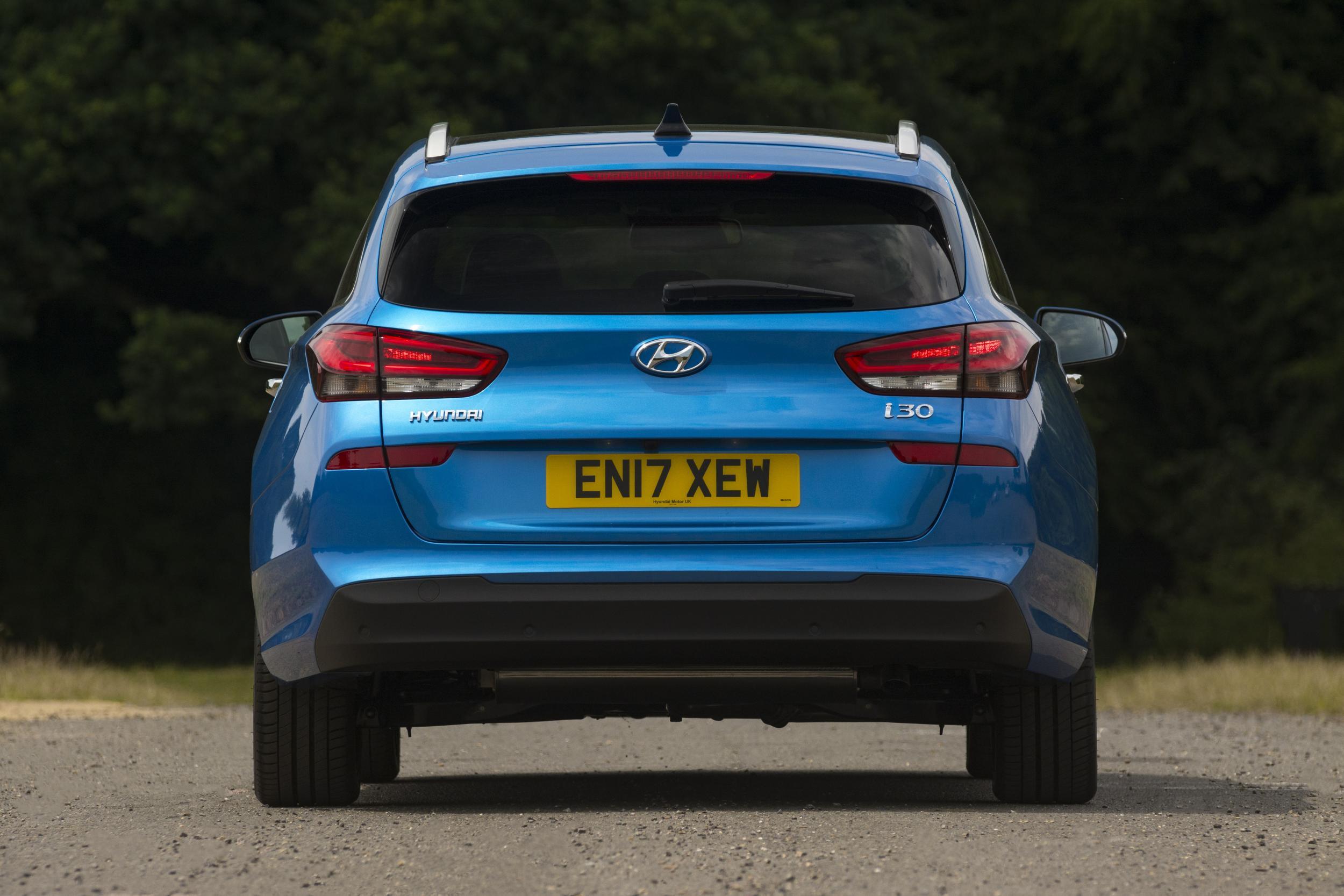
Given that the i30 was styled by the gifted Peter Schreyer, who was poached by the Hyundai/Kia Group from Audi, all of these muscular European touches aren’t perhaps so surprising, but, like Manchester City in the Premier League, the Korean company seems to be going through an unprecedented run of home and away wins. Nowadays Hyundai and Kia vehicles look as good as they actually are, which is only fair. The i30 range also has an even more dramatically styled “fastback” version, which is the really glamorous one, and the new Kona is a bit of a stunner too, but those are other stories…
Indoors the Hyundai carries on the “near premium” theme. As with its sibling the Kia C’eed, the i30 is made in Europe, in the Czech Republic, and the interior materials are sourced from the same class of suppliers that VW and Peugeot use. So defectors form these more established brands, long the default choice of the British middle-class motorist, will not be disappointed by what they find inside. The dual clutch semi-automatic transmission in my model was also quite reminiscent of any number of VW Group products, and the equipment levels were also highly competitive; your i30 will help you stay in lane on motorways, for example, and has headlamps that turn with the steering, that wonderful boon pioneered by the old Citroen DS six decades ago but only now becoming more commonplace in “ordinary” transport.
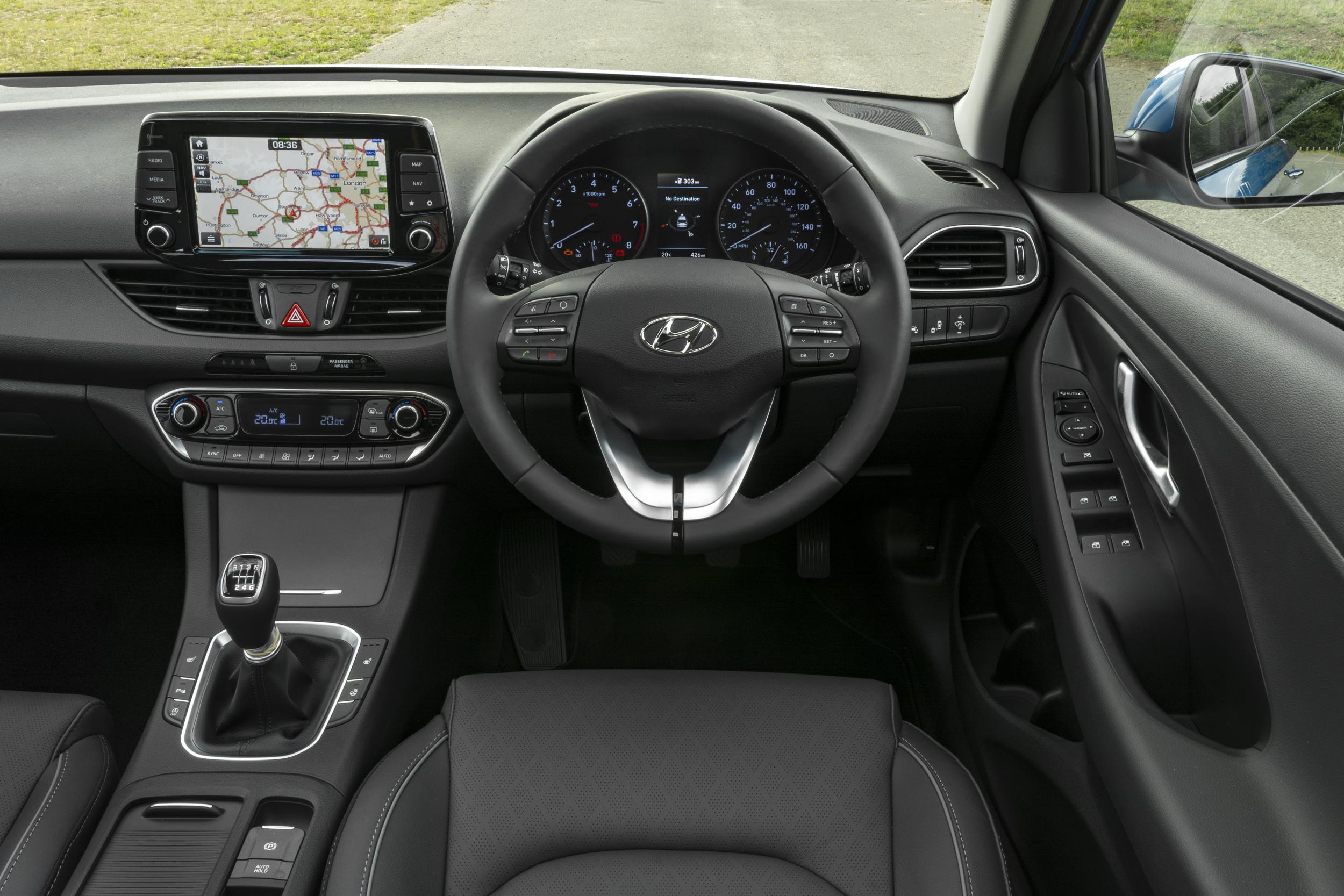
The centre screen is easy to use for the entertainment and sat nav settings; the heating exceptionally effective (heated seats and steering wheel, by the way), and you get blind spot detection too (so a little orange light and a beep goes off on the door mirror when someone is undertaking you). The only thing that was a little disappointing was the engine/transmission; sometimes it was a little hesitant to get going from rest, presumably because the car’s “brain” is a bit too slow witted sometimes (and a phenomenon that I’ve experienced on many other makers’ cars with such a transmission; a traditional automatic or manual is superior). Generally the i30 was only really responsive when it was slotted into “Sport” mode, when it became very frisky indeed. It has safe and predicable handling, particularly for an estate, and is about as entertaining as a car in this class gets. For more fun you need to go cheap (eg Suzuki Ignis) or spend rather more (the sensational Seat Leon Cupra Estate).
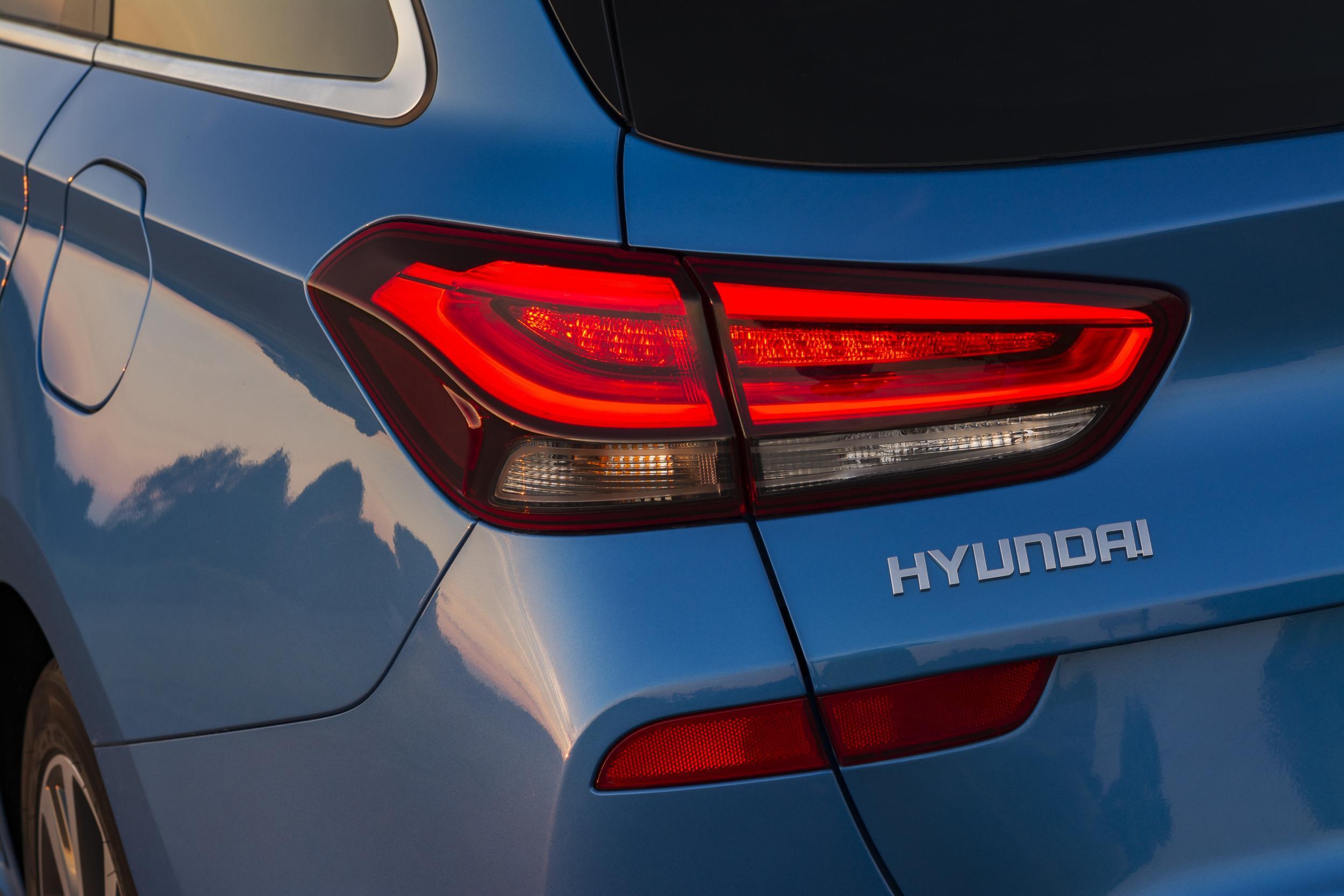
Given that it’s an estate, I ought to say that it was tested as such; lugging large quantity of books up the motorway. The boot lip is maybe a little high, if I’m honest, but the space was certainly there, and the performance little affected by the load out back. It could probably do with more of those nets, hooks and elasticated string you get in the back of “lifestyle” cars these days too. For most semi-commercial and family purposes the i30 is perfectly adequate. If you want something that is just there to lug clobber about then I’d suggest a Dacia Logan MPV, for about half the price even of this Hyundai. The truth, I guess, is that people will nowadays more readily go for a small SUV, such as a Nissan Juke, or indeed the new Hyundai Kona model, over an i30 Tourer, because it’s fashionable and they prefer the high seating, but, for those who care about vehicle dynamics and the pleasure of driving, as well as practicality, an i30 Tourer is a much better proposition, and in so many ways.
The spec
Hyundai i30 Tourer Premium SE
Price: £25,740 (range starts at £17,495)
Engine capacity: 1.4 litre; 7-sp dual-clutch/auto
Power output (PS @ rpm): 140@6,000
Top speed (mph): 126
0-62 mph (seconds): 9.5
Fuel economy (mpg): 51.4
CO2 emissions (g/km): 125
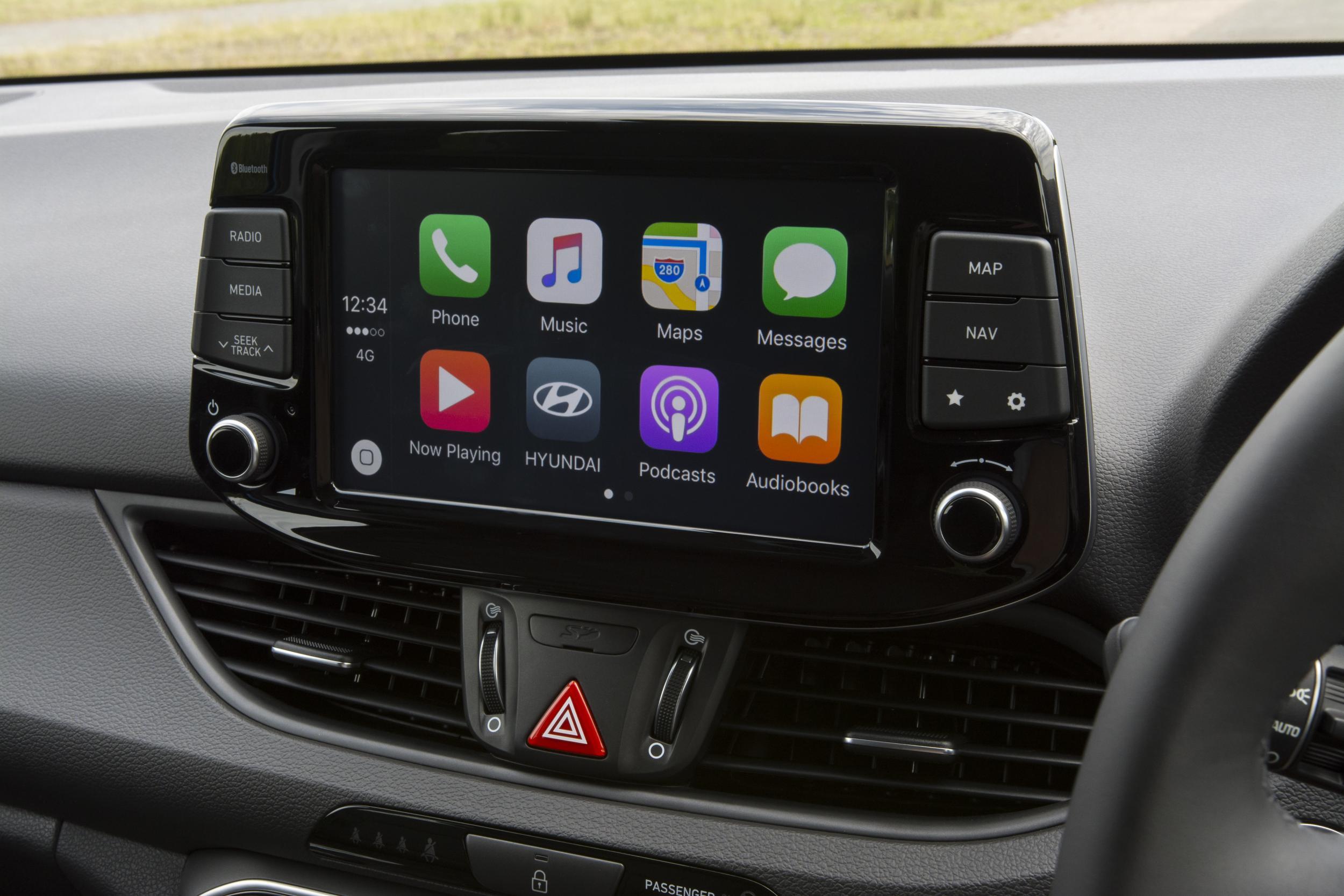
Park the i30 next to a similar shaded Ford, as I did, and there seems little to choose between the pair in fit and finish. The Hyundai isn’t what you’d call a distinctive car, or one that makes that much of a “statement”, apart from the buyer being a little more value focused than some. I think that ought to change, gradually, just as the Hyundai image has already progressed in the 35 years they’ve been on the UK market, to an extent echoing the transformation in the Skoda brand, with which they once competed down at the budget end of the market. Hyundai, in Korean, means “modern”, and the cars have a very up-to-date look and feel to them – but also fit better with consumers’ tastes – losing a little of their infatuation with brand.
I know that sounds silly in a world where a Range Rover Evoque is a common focus of aspirational envy, but in the mass market, among the VWs, Vauxhalls, Peugeots, Citroens, Renaults and Fords, I’m not sure how much brand equity there really is embodied in those marques – increasingly little, I reckon. There lies Hyundai’s great opportunity in the market, and one the i30 Tourer shows them more than ready to take.
Join our commenting forum
Join thought-provoking conversations, follow other Independent readers and see their replies
Comments
Bookmark popover
Removed from bookmarks